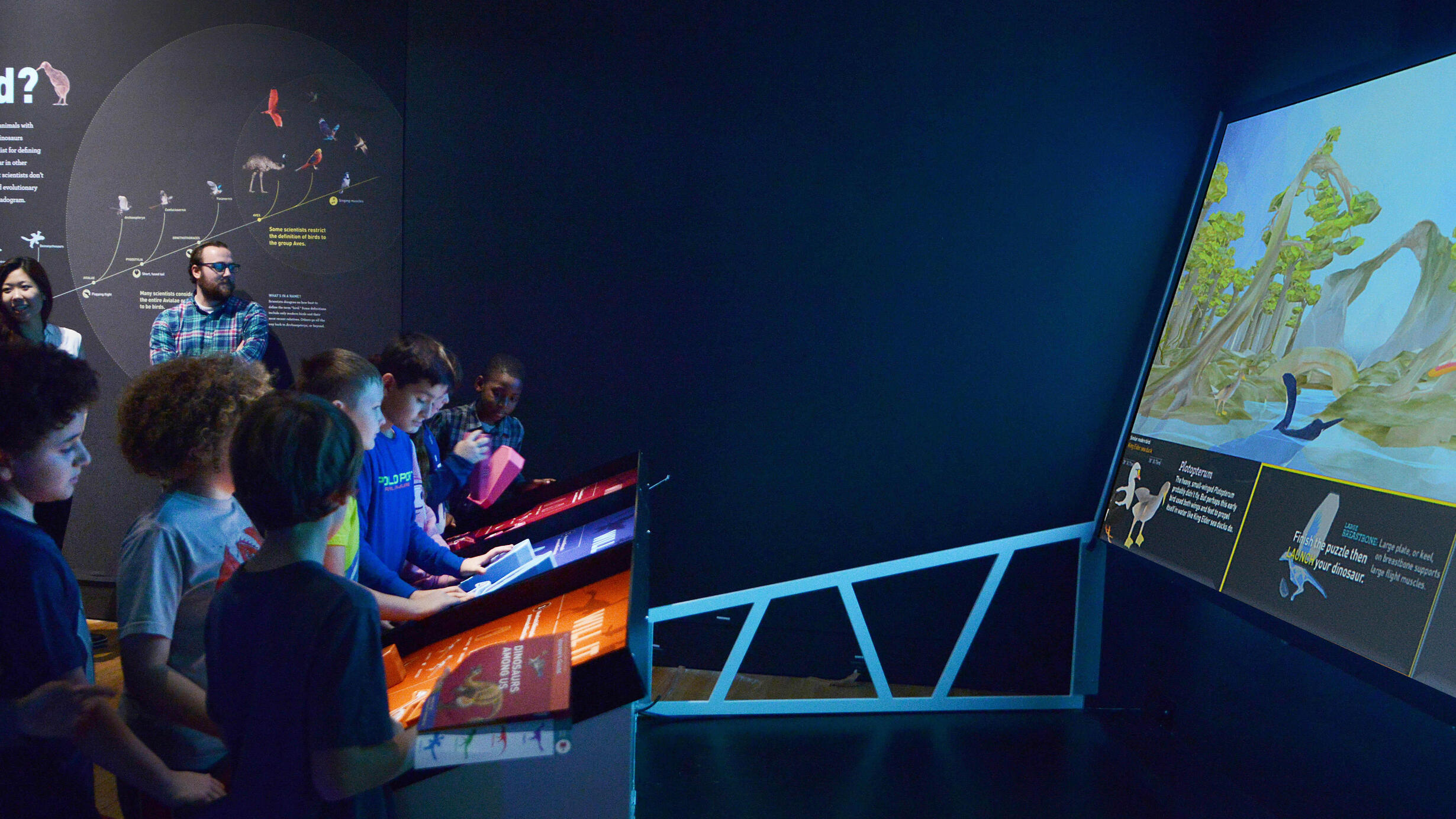Dinosaur Feathers to Bird Flight
Part of the Dinosaurs Among Us exhibition.

This dramatic transition didn't happen all at once, as Dinosaurs Among Us demonstrates. The evolution of feathers and flight-ready brains was just the beginning. And those awkward in-between stages include some of the most fascinating animals that ever lived: bushy, feathered tyrannosaurs; birds with lizard-like tails, teeth and claws; and even some small, leaping creatures with four wing-like limbs.
Zhao Chuang; courtesy of Peking Natural Science Organization
This early almost-bird, named Anchiornis huxleyi, appears right on the cusp of flight. Its feathered proto-wings couldn’t have kept it aloft for long, but they might have provided enough lift to help it leap to safety, pounce on prey, parachute down from heights, or run up steep slopes. Whatever the function of these early wings, they represent one of the last evolutionary stages before true modern flight evolved.
Zhao Chuang; courtesy of Peking Natural Science Organization
This bizarre, bird-like dinosaur, called Microraptor, appears to have four wings: both its front and back limbs were feathered. And those rear leg feathers weren’t just decorative; they show adaptations for flight. The creature likely couldn’t fly far under its own power, but it might have glided down from trees, perhaps even flapping its front limbs.
Zhao Chuang; courtesy of Peking Natural Science Organization
Fully modern birds already filled the skies at least 50 million years ago, and many of these species were almost indistinguishable from living birds. What made these ancient birds “modern?” All the key adaptations for powered flight were already present, including full-size wings, shoulders that permit a full range of flapping movements and fused skeletons to transfer the energy from flapping into flight.
Lead image:
Visitors exploring the flight interactive in the Dinosaurs Among Us exhibition. ©American Museum of Natural History/R.Mickens